Why is Gabapentin Prescribed and How to Buy Gabapentin Online?
Gabapentin capsules, tablets, and oral solution are used to help control certain types of seizures in people who have epilepsy. Gabapentin capsules, tablets, and oral solution are also used to relieve the pain of postherpetic neuralgia (PHN; the burning, stabbing pain or aches that may last for months or years after an attack of shingles).
Gabapentin extended-release tablets (Horizant) are used to treat restless legs syndrome (RLS; a condition that causes discomfort in the legs and a strong urge to move the legs, especially at night and when sitting or lying down). Gabapentin is in a class of medications called anticonvulsants.
Gabapentin treats seizures by decreasing abnormal excitement in the brain. Gabapentin relieves the pain of PHN by changing the way the body senses pain. It is not known exactly how gabapentin works to treat restless legs syndrome.
Buy Online Gabapentin 800mg and Gabapentin 400mg online
| Gabapentin 800 mg – 180 Tabs | $199 | free | $199 | Order |
| Gabapentin 600 mg – 180 Tabs | $195 | free | $195 | Order |
| Gabapentin 600 mg – 120 Tabs | $148 | free | $148 | Order |
| Gabapentin 400 mg – 180 Tabs | $179 | free | $179 | Order |
| Gabapentin 300 mg – 180 Tabs | $169 | free | $169 | Order |
| Generic Fioricet 325/50/40mg – 180 Tabs (Blue ) | $249 | free | $249 | Order |
| Generic Fioricet 325/50/40mg – 180 Tabs (White ) | $249 | free | $249 | Order |
| Generic Fioricet 325/50/40mg – 180 Tabs | $229 | free | $229 | Order |
| Generic Fioricet 325/50/40mg – 120 Tabs | $219 | free | $219 | Order |
| Generic Fioricet 325/50/40mg – 90 Tabs | $179 | free | $179 | Order |
How should Gabapentin be Used?
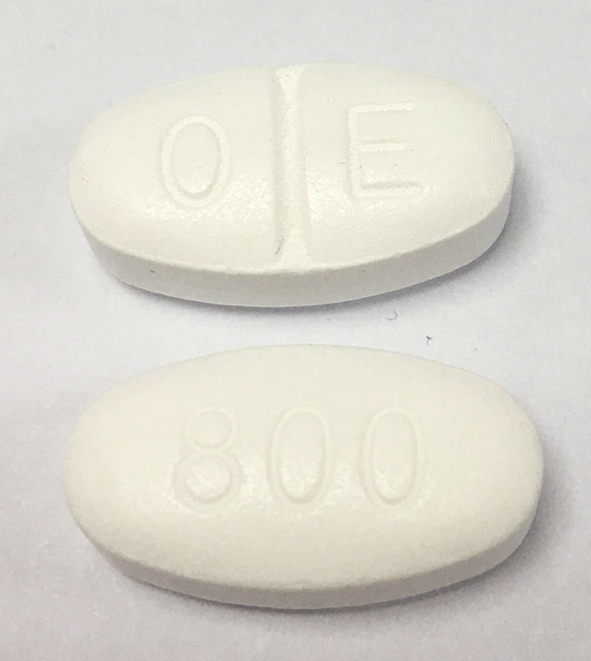 Gabapentin comes as a capsule, a tablet, an extended-release (long-acting) tablet, and an oral solution (liquid) to take by mouth. Gabapentin capsules, tablets, and oral solution are usually taken with a full glass of water (8 ounces [240 milliliters]), with or without food, three times a day.
Gabapentin comes as a capsule, a tablet, an extended-release (long-acting) tablet, and an oral solution (liquid) to take by mouth. Gabapentin capsules, tablets, and oral solution are usually taken with a full glass of water (8 ounces [240 milliliters]), with or without food, three times a day.
These medications should be taken at evenly spaced times throughout the day and night; no more than 12 hours should pass between doses. The extended-release tablet (Horizant) is taken with food once daily at about 5 PM. Follow the directions on your prescription label carefully, and ask your doctor or pharmacist to explain any part you do not understand. Take gabapentin exactly as directed. Do not take more or less of it or take it more often than prescribed by your doctor.
Gabapentin extended-release tablets cannot be substituted for another type of gabapentin product. Be sure that you receive only the type of gabapentin that was prescribed by your doctor. Ask your pharmacist if you have any questions about the type of gabapentin you were given.
Swallow the extended-release tablets whole; do not cut, chew, or crush them.
If your doctor tells you to take one-half of a regular tablet as part of your dose, carefully split the tablet along the score mark. Use the other half-tablet as part of your next dose. Properly throw away any half-tablets that you have not used within several days of breaking them.
If you are taking gabapentin to control seizures or PHN, your doctor will probably start you on a low dose of gabapentin and gradually increase your dose as needed to treat your condition. If you are taking gabapentin to treat PHN, tell your doctor if your symptoms do not improve during your treatment.
Gabapentin may help to control your condition but will not cure it. Continue to take gabapentin even if you feel well. Do not stop taking gabapentin without talking to your doctor, even if you experience side effects such as unusual changes in behavior or mood.
If you suddenly stop taking gabapentin tablets, capsules, or oral solution, you may experience withdrawal symptoms such as anxiety, difficulty falling asleep or staying asleep, nausea, pain, and sweating. If you are taking gabapentin to treat seizures and you suddenly stop taking the medication, you may experience seizures more often. Your doctor may decrease your dose gradually over at least a week.
Your doctor or pharmacist will give you the manufacturer’s patient information sheet (Medication Guide) when you begin treatment with gabapentin and each time you refill your prescription. Read the information carefully and ask your doctor or pharmacist if you have any questions. You can also visit the Food and Drug Administration (FDA) website (http://www.fda.gov/Drugs) or the manufacturer’s website to obtain the Medication Guide.
What special precautions should I follow?
Before taking gabapentin,
- tell your doctor and pharmacist if you are allergic to gabapentin, any other medications, or any of the inactive ingredients in the type of gabapentin you plan to take. Ask your pharmacist for a list of the inactive ingredients.
- you should know that gabapentin is available in different forms that may be prescribed for different uses. Ask your doctor to be sure that you are not taking more than one product that contains gabapentin.
- tell your doctor and pharmacist what prescription and nonprescription medications, vitamins, nutritional supplements, and herbal products you are taking or plan to take. Be sure to mention any of the following: hydrocodone (in Hydrocet, in Vicodin, others), medications that make you feel dizzy or drowsy, morphine (Avinza, Kadian, MSIR, others), and naproxen (Aleve, Anaprox, Naprosyn, others). Your doctor may need to change the doses of your medications or monitor you carefully for side effects.
- if you are taking antacids such as Maalox or Mylanta, take them at least 2 hours before you take gabapentin tablets, capsules, or solution.
- tell your doctor if you have or have ever had kidney disease. If you will be taking the extended-release tablets, also tell your doctor if you need to sleep during the day and stay awake at night.
tell your doctor if you are pregnant, plan to become pregnant, or are breast-feeding. If you become pregnant while taking gabapentin, call your doctor. - if you are having surgery, including dental surgery, tell the doctor or dentist that you are taking gabapentin.
- you should know that this medication may make you drowsy or dizzy, may slow your thinking, and may cause loss of coordination. Do not drive a car or operate machinery until you know how this medication affects you, and your doctor agrees that it is safe for you to begin these activities.
- if you are giving gabapentin to your child, you should know that your child’s behavior and mental abilities may change while he or she is taking gabapentin. Your child may have sudden changes in mood, become hostile or hyperactive, have difficulty concentrating or paying attention, or be drowsy or clumsy. Have your child avoid activities that could be dangerous, such as riding a bicycle, until you know how gabapentin affects him or her.
- remember that alcohol can add to the drowsiness caused by this medication.
- you should know that your mental health may change in unexpected ways and you may become suicidal (thinking about harming or killing yourself or planning or trying to do so) while you are taking gabapentin for the treatment of epilepsy, mental illness, or other conditions. A small number of adults and children 5 years of age and older (about 1 in 500 people) who took anticonvulsants such as gabapentin to treat various conditions during clinical studies became suicidal during their treatment. Some of these people developed suicidal thoughts and behavior as early as one week after they started taking the medication.
There is a risk that you may experience changes in your mental health if you take an anticonvulsant medication such as gabapentin, but there may also be a risk that you will experience changes in your mental health if your condition is not treated. You and your doctor will decide whether the risks of taking an anticonvulsant medication are greater than the risks of not taking the medication. You, your family, or your caregiver should call your doctor right away if you experience any of the following symptoms: panic attacks; agitation or restlessness; new or worsening irritability, anxiety, or depression; acting on dangerous impulses; difficulty falling or staying asleep; aggressive, angry, or violent behavior; mania (frenzied, abnormally excited mood); talking or thinking about wanting to hurt yourself or end your life; withdrawing from friends and family; preoccupation with death and dying; giving away prized possessions; or any other unusual changes in behavior or mood. Be sure that your family or caregiver knows which symptoms may be serious so they can call the doctor if you are unable to seek treatment on your own.
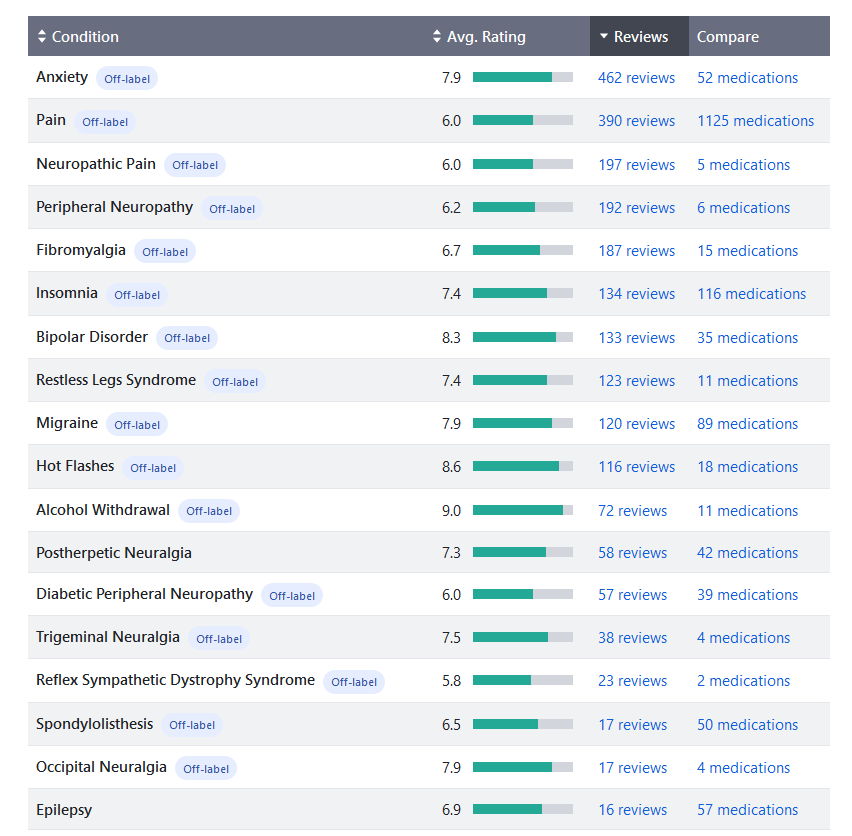
Use only the brand and form of gabapentin that your doctor has prescribed. Check your medicine each time you get a refill at the pharmacy, to make sure you have received the correct form of this medication. Do not stop taking Gabapentin unless your doctor tells you to. If your treatment is stopped it should be done gradually over a minimum of 1 week. If you stop taking gabapentin suddenly or before your doctor tells you, there is an increased risk of seizures.
Gabapentin has an average rating of 7.1 out of 10 from a total of 2,320 ratings on Drugs.com. 64% of reviewers reported a positive experience, while 21% reported a negative experience.
What is the Off-Label Usages of Gabapentin ?
Gabapentin is in the drug class gamma-aminobutyric acid analogs. Gabapentin is used to treat the following conditions:
- Alcohol Withdrawal
- Anxiety
- Benign Essential Tremor
- Bipolar Disorder
- Burning Mouth Syndrome
- Carpal Tunnel Syndrome
- Cluster-Tic Syndrome
- Cough
- Diabetic Peripheral Neuropathy
- Epilepsy
- Erythromelalgia
- Fibromyalgia
- Hiccups
- Hot Flashes
- Hyperhidrosis
- Insomnia
- Lhermitte’s Sign
- Migraine
- Nausea/Vomiting, Chemotherapy Induced
- Neuropathic Pain
- Occipital Neuralgia
- Pain
- Periodic Limb Movement Disorder
- Peripheral Neuropathy
- Postherpetic Neuralgia
- Postmenopausal Symptoms
- Primary Orthostatic Tremor
- Pruritus
- Pudendal Neuralgia
- Reflex Sympathetic Dystrophy Syndrome
- Restless Legs Syndrome
- Small Fiber Neuropathy
- Spondylolisthesis
- Syringomyelia
- Transverse Myelitis
- Trigeminal Neuralgia
- Vulvodynia
Gabapentin Dosage
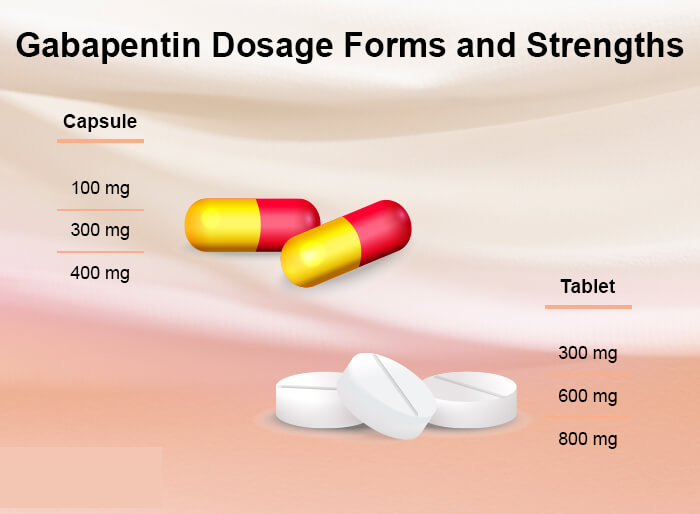
Gabapentin is often titrated to effect and, as a result, doses can vary from person to person and can change over time. Most commonly prescribed as capsules or tablets, examples of available dosages include:
- 100mg
- 300mg
- 400mg
- 600mg
- 800mg
Gabapentin is also available as a liquid, often used in children to prevent seizures.
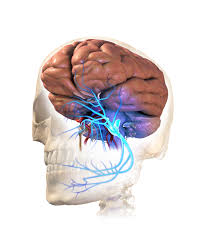
Gabapentin Dosage for Nerve Pain
The exact way that gabapentin helps with nerve pain is not known, but it may change the way the body senses and reacts to pain. For neuralgia or nerve pain, gabapentin is often started at 300 mg daily and increased by 300 mg per day until pain relief is achieved. Some studies show doses of 1200 mg or more per day is effective for nerve pain.
Gabapentin Dosage for Anxiety
Used in combination with other medications, gabapentin is sometimes helpful for anxiety. While there is limited information for this use, there are some examples where it has been helpful. In one instance, doses of at least 900 mg per day were shown to be helpful in a patient with Generalized Anxiety Disorder (GAD) whereas severe symptoms of anxiety returned at doses less than 600 mg per day.
Gabapentin Dosage for Seizures
Gabapentin seems to slow signaling between the brain and the body, but its exact mechanism for preventing seizures is not known. Typically, gabapentin is started at 300 mg three times per day for this use and slowly increases. Over the long term, doses totaling up to 2400 mg per day have been well tolerated. For short periods, as much as 3600 mg divided throughout the day has been used.
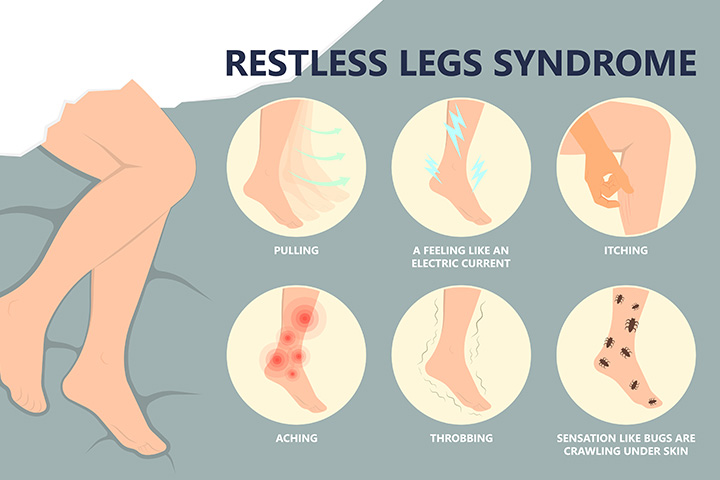 Gabapentin Dosage for Restless Leg Syndrome
Gabapentin Dosage for Restless Leg Syndrome
Similar to the way gabapentin may be helpful in preventing seizures by slowing signals between the brain and the body, gabapentin may also be helpful for Restless Leg Syndrome (RLS). For RLS, gabapentin enacarbil 600mg, under the brand name Horizant, is taken each evening and can be slowly increased to effect.
Gabapentin Dosing tips
Gabapentin is one of the rare psychiatric meds with “nonlinear pharmacokinetics.” That means serum levels start to plateau after a certain dose and rise sluggishly from there. For gabapentin, that dose is 900 mg. At 900 mg, 540 mg of the drug is absorbed; at 1200 mg, only 564 mg is absorbed; and at 2400 mg, a measly 816 mg makes it into the bloodstream. This slowdown occurs because the transporters that absorb gabapentin are easily saturated at higher doses (the prodrug Horizant was developed to overcome this limitation, but it does so at a cost).
Gabapentin is excreted entirely by the kidneys, which means it avoids hepatic drug interactions, but the dose needs to be lowered as creatinine clearance (CC) declines, a common problem in older patients. The usual dose range of 900–3600 mg/day is lowered to 400–1400 mg/day for a CC of 30–59 mL/min, 200–700 mg/day for a CC of 15–29 mL/min, and 100–300 mg/day for a CC below 15 mL/min (such patients usually require dialysis).
With a six-hour half-life, gabapentin can be divided three times daily for anxiety disorders and dosed at bedtime for sleep disorders. When stopping the medication, taper gradually to avoid withdrawal symptoms, which are rare and include tremor, sweating, restlessness, insomnia, and a lower threshold for seizures
How to take Gabapentin ?
- Before starting this treatment, read the manufacturer’s printed information leaflet from inside the pack. It will give you more information about Gabapentin and will provide you with a full list of the side-effects which you may experience from taking it.
- Take Gabapentin exactly as your doctor tells you to. There are several different strengths of Gabapentin tablets and capsules available, and you could be prescribed more than one strength.
- You will be advised to take a low dose when you first start taking Gabapentin, and then to increase the dose over a few days. This is to allow your body to get used to it. Most people take three doses a day once they are on a regular maintenance dose. Your doctor will explain all this to you, and the dosing directions will be printed on the label of the pack. If you are still unsure about how to take your doses, ask your pharmacist to advise you.
- You can take Gabapentin before or after food. Swallow the tablets/capsules with a drink of water. If you have been supplied with oral liquid medicine, see the instructions below for using the oral dosing syringe.
- Once you are taking a regular amount of Gabapentin, try to take your doses at the same times each day. This will help you avoid missing doses.
- If you do forget to take a dose, take one as soon as you remember. Try to take the correct number of doses each day, but do not take two doses at the same time.
- If you need to take an antacid or indigestion remedy, do not take it during the two hours before or the two hours after you take Gabapentin. This is because antacids reduce the amount of Gabapentin that your body absorbs.
Instructions for Using the Dosing Syringe with Gabapentin Rosemont Oral Solution
-
- Remove the bottle cap, and push the syringe adaptor into the top of the open bottle.
- Insert the syringe into the adapter.
- Turn the bottle (with the syringe connected to it) upside down.
- Gently pull out the plunger of the syringe so that the solution fills the syringe to the mark which corresponds to your dose.
- Turn the bottle the correct way up again, and remove the syringe from the bottle.
- Put the tip of the syringe into your mouth, and gently push the plunger so that the liquid is released into your mouth.
- Replace the bottle cap. Wash the syringe with water after each use.
Getting the Most From Your Treatment
- Try to keep your regular appointments with your doctor. This is so your doctor can check on your progress.
- When you first start a new treatment for epilepsy there may be a change in the number or type of seizures you experience. Your doctor will advise you about this. If you are a woman and want to have a family, make sure that you discuss this with your doctor before you become pregnant. This is so that you can be given advice about your treatment from a specialist.
- People with epilepsy must stop driving. Your doctor will advise you about when it may be possible for you to start driving again. This will usually be after a year free of seizures.
- A small number of people have developed mood changes or thoughts about suicide whilst being treated with anti-epileptics. If this happens to you, you must tell your doctor about it straightaway.
- If you buy any medicines, always check with a pharmacist that they are suitable to take with your other medicines.
- You must take gabapentin regularly every day. Stopping treatment suddenly can cause problems. If it becomes necessary for the treatment to stop, your doctor will want you to reduce your dose over a few days.
How to Store Gabapentin
- Keep all medicines out of the reach and sight of children.
- Store in a cool, dry place, away from direct heat and light. Do not store in the bathroom.
- Once a bottle of Gabapentin Rosemont Oral Solution has been opened it will keep for one month. Do not use it after this time, and make sure you have a fresh supply.
- Do not flush medications down the toilet or pour them into a drain unless instructed to do so. Properly discard this product when it is expired or no longer needed. Consult your pharmacist or local waste disposal company.
What Should I Know About Storage and Disposal of This Medication?
Keep Gabapentin in the container it came in, tightly closed, and out of reach of children. Store the tablets, extended-release tablets, and capsules at room temperature, away from excess heat and moisture (not in the bathroom). Store the oral solution in the refrigerator. Throw away any medication that is outdated or no longer needed. Talk to your pharmacist about the proper disposal of your medication.
In case of emergency/overdose
In case of overdose, call your local poison control center at 1-800-222-1222. If the victim has collapsed or is not breathing, call local emergency services at 911.
What other information should I know?
Keep all appointments with your doctor. Before having any laboratory test, tell your doctor and the laboratory personnel that you are taking gabapentin.
If you use a dipstick to test your urine for protein, ask your doctor which product you should use while taking this medication.
Do not let anyone else take your medication.
Ask your pharmacist any questions you have about refilling your prescription.
It is important for you to keep a written list of all of the prescription and nonprescription (over-the-counter) medicines you are taking, as well as any products such as vitamins, minerals, or other dietary supplements. You should bring this list with you each time you visit a doctor or if you are admitted to a hospital. It is also important information to carry with you in case of emergencies.
Brand names of Gabapentin
- FusePaq Fanatrex
- Gabarone
- Gralise
- Neurontin
Gabapentin is used to help control partial seizures (convulsions) in the treatment of epilepsy. This medicine cannot cure epilepsy and will only work to control seizures for as long as you continue to take it.
Gabapentin is also used in adults to manage a condition called postherpetic neuralgia, which is pain that occurs after shingles.
Gabapentin works in the brain to prevent seizures and relieve pain for certain conditions in the nervous system. It is not used for routine pain caused by minor injuries or arthritis. Gabapentin is an anticonvulsant.
This medicine is available only with your doctor’s prescription.
This product is available in the following dosage forms:
- Capsule
- Tablet
- Solution
- Suspension
Gabapentin can be used for Migraine Prevention
Neurontin is the trade name for the generic drug gabapentin. It is useful as an anti-epileptic drug and as an analgesic, particularly for pain of the neuropathic or neurogenic type. (pain from irritation or inflammation of nerves). When used for controlling epilepsy, it is usually used in conjunction with another anti-epileptic drug. It is used much more extensively in the medical field to treat pain than it is to treat epilepsy.
The chemical structure of gabapentin is related that of gamma-aminobutyric acid (GABA) which is a neurotransmitter in the brain. The exact mechanism as to how gabapentin controls epilepsy and relieves pain is unknown, but it probably acts like the neurotransmitter GABA.
Animal studies show that gabapentin prevents the development of allodynia (a normally non painful stimulus which is perceived as painful) and hyperalgesia (an exaggerated response to a painful stimulus).
Gabapentin can be very helpful in controlling the pain of trigeminal neuralgia (tic doloreaux), post herpetic neuralgia (the lingering pain after a bout of shingles), the pain of diabetic neuropathy and other neuritic pains such as pain from nerve irritation due spinal arthritis or disc disease and occipital neuralgia. Occasionally it seems to be helpful in controlling migraine and other headaches. It has also been reported to be helpful in controlling the pain of fibromyalgia.
International and domestic studies that have evaluated Neurontin for migraine prevention suggest that it is effective. In a study of 63 patients with migraine (with or without aura), gabapentin significantly reduced migraine frequency and intensity among 30 patients who received it. In this study, adverse events were mild to moderate in severity.

Similarly, in a large study, 143 people with migraine received daily doses of Neurontin or placebo for 12 weeks. At the end of 12 weeks, the migraine rate had declined from 4.2 migraines before treatment to 2.7 migraines after treatment in those who received this drug.
This decrease was significantly greater than the decrease from 4.1 migraines to 3.5 migraines among those who received placebo. Of the 56 gabapentin recipients, 46% had at least a 50% reduction in the four-week migraine rate. Drug-related adverse events (sleepiness and dizziness) led to drug withdrawal in 13% of patients in the gabapentin group compared with 7% in the placebo group. The researchers concluded that this medication is an effective and well-tolerated preventive for migraine.
Gabapentin is an effective prophylactic agent for patients with migraine. In addition, gabapentin appears generally well tolerated with mild to moderate somnolence and dizziness.
Gabapentin is an Addiction Treatment Medication
Gabapentin is used to treat cases of addiction in an off-label manner. Different companies, including Parke-Davis, Greenstone, and Teva, manufacture several varieties of the generic drug. Other drugs that have been used to treat the symptoms of addiction withdrawal, for specific substances, include:
- Clondine
- Other anticonvulsants, such as Tegretol and Depakote
- Methadone and buprenorphine
- Naltrexone
1.Typical Application
Available in capsules, tablets, and as an oral liquid, dosages range from 100 mg to 800 mg. The frequency with which a dose is repeated depends on the specific dose, which is usually based on the severity of withdrawal and the client’s weight. The drug’s half-life is around 5-7 hours.
Generally, it is used during medical detox and throughout subsequent treatment modalities to support relapse prevention while clients adjust to their new sober lifestyles.
2.Treating Substance Abuse
Despite its therapeutic role in neuropathic pain, gabapentin produces psychoactive effects and has an abuse liability. Gabapentin abuse typically involves taking higher doses in a single administration. The median single dose for gabapentin abuse is 3600 mg, which is 3 times the maximum recommended single dose of 1200 mg. Risk factors for gabapentin abuse include current or previous opioid abuse, previous cocaine use, and/or concurrent use of benzodiazepines or cannabis. Alcohol use disorder is not generally a predictor of gabapentin abuse.
According to Medscape, Gabapentin can inflict users with suicidal thoughts and abrupt changes in behaviour. For this reason, it should only be used under medical supervision. It can also cause elevated blood pressure, fever, sleep problems, appetite changes, and chest pain.
While it has been used to treat addictions to other substances, gabapentin is most often used to treat alcoholism — an addiction some 16.6 million adults suffered from in 2013, per the National Institute on Alcohol Abuse and Alcoholism.
During withdrawal from alcohol abuse or dependency, clients may experience anxiety, tremors, agitation, and irritability. In order to understand how Gabapentin works, there must be a basic understanding of how the brain works first. Nervous system activity is partially controlled by GABA neurotransmitters. Gabapentin works by reducing activity among GABA. As a result, signals for pain, agitation, and anxiety are reduced, too.
An American Journal of Psychiatry study showed impressive results during the 16-week treatment of 150 people who were dependent on alcohol, noting better results among those who were treated with both Gabapentin and Naltrexone than the latter alone. The Journal of Clinical Psychiatry reported on another study in which individuals treated for alcoholism with Gabapentin showed a significant reduction in how much they drank and a greater rate of abstinence than those in the placebo group.
Gabapentin has the same calming effect on individuals who are detoxing from marijuana and Benzodiazepines. Despite claims from fans of the plant-based drug, marijuana is indeed addictive. In 2012, 305,560 people checked into rehab citing cannabis as their primary drug of abuse, per the Substance Abuse and Mental Health Services Administration. One Neuropsychopharmacology study that analyzed the use of Gabapentin in the treatment of marijuana addiction and withdrawal noted individuals in the Gabapentin treatment group used less marijuana, had fewer withdrawal symptoms, and experienced improvements in cognitive functioning, compared to the placebo group.
Gabapentin is used to Treat Neuropathic pain
Painful neuropathy is a common and disabling problem in patients with longstanding diabetes mellitus. Tricyclic antidepressant drugs and other chronic analgesics have been beneficial in some patients, but no agent successfully relieves pain in most patients and adverse effects often preclude their use in high doses. Anecdotal reports suggest that Gabapentin ameliorates pain associated with neuropathy and other neurological conditions with few side effects.
We conducted a randomised, double blind, placebo controlled trial to study the effect of low dose Gabapentin in patients with painful diabetic neuropathy.
The results of this study suggest that gabapentin is probably ineffective or only minimally effective for the treatment of painful diabetic neuropathy at a dosage of 900 mg/day.
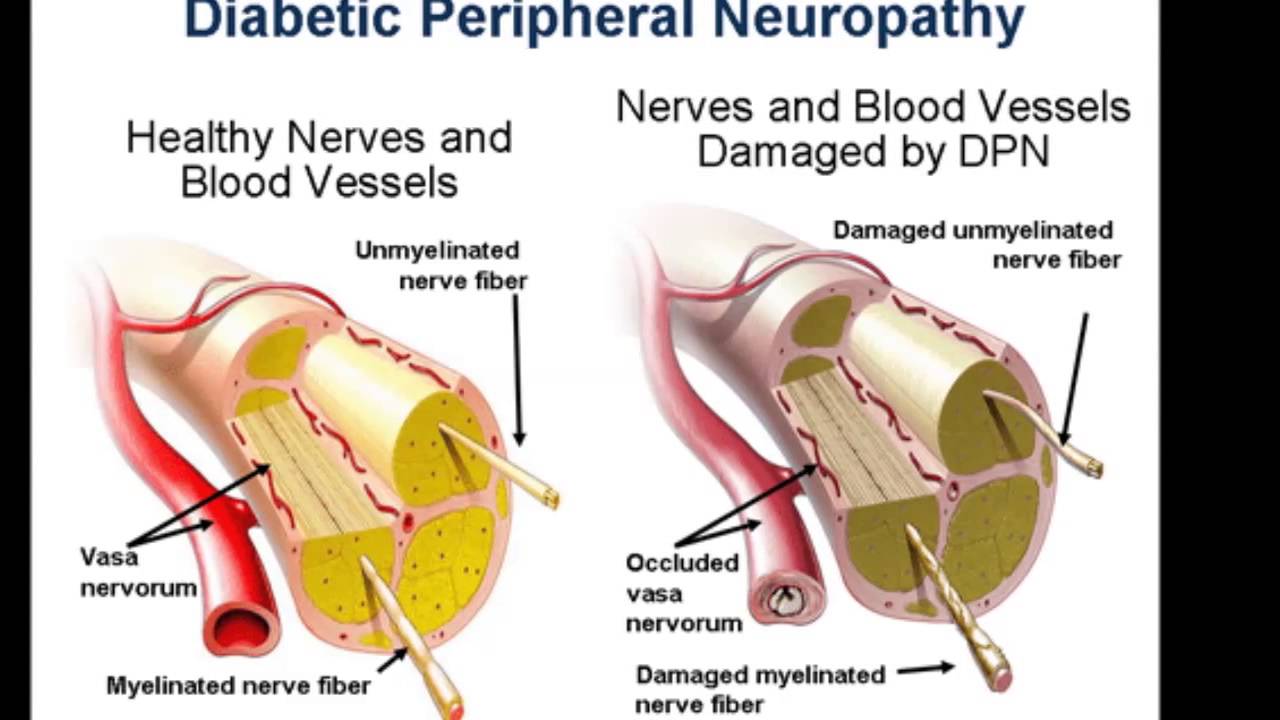 Gabapentin is used to treat Postherpetic Neuralgia
Gabapentin is used to treat Postherpetic Neuralgia Gabapentin is reported to be efficacious in the treatment of neuropathic pain associated with postherpetic neuralgia. In a multicentre, randomised, double‐blind, placebo‐controlled, parallel design, 8‐week study involving 229 subjects with postherpetic neuralgia, Rowbotham et al.
demonstrated the efficacy of Gabapentin in the treatment of postherpetic neuralgia. Patients were received Gabapentin to a maximum of 3600 mg.day−1 of Gabapentin or matching placebo. The study showed a statistically significant (p < 0.001) decrease in pain scores (using an 11‐point Likert scale) from 6.3 to 4.2 for the Gabapentin group, compared with 6.5–6.0 in the placebo group.
Secondary measures of pain, as well as sleep interference, were improved with gabapentin (p < 0.001). The NNT for gabapentin was 3.2, compared with a combined analysis of three randomised controlled trials on carbemazepine in postherpetic neuralgia in which the NNT was 2.5 .
Gabapentin is Used to Treat Alcohol Withdrawal
I am still on gabapentin. Dose is 600mg three times a day – total 1800mg in a 24 hour period. I had not had a drink “craving” since August 11, 2014 when I quit. (I did this within one week of starting gabapentin). I did have a glass of wine at Christmas, one beer on my birthday, and one glass of wine at Easter. That’s it. I use to have 10 beers a day, and three glasses of wine or gin for bad panic attacks and generalized anxiety. So for me (not everyone) I can have that occasional drink with friends, at party or any social event – then come home and not touch the stuff and WITHOUT ANY CRAVINGS AT ALL – as I had during my 40-year binge. Still, this drug is amazing. AA never worked for me.
“I went on gabapentin for alcoholism that troubled me for 10 years when nothing including Alcoholics Anonymous barely worked. I read anecdotal information that it helped with alcoholism, went on 600mg twice daily and it was the first thing that helped me. Now I take 1200mg twice daily and find it works great! Afterwards I read a study in the Journal of American Medicine, Gabapentin in Alcohol Dependance, 2014 that confirmed it works well in many people for cravings and binge drinking. This medicine should be further studied to confirm it works well. On this site it is obvious it helps a lot of people struggling with alcoholism which I have, along with Bipolar Disorder. I call Gabapentin my” happy pills” that also takes away my anxiety
I’ve detoxed several times. The last one was really bad. This time My Dr. put me gabapentin 300 mg. 3 times a day and Lithium. I usually suffer withdrawals for 5-7 days. I did have anxiety for two days, but I’m on day 3, no anxiety and no cravings
Are there any serious interactions with Gabapentin and other medications?
Serious breathing problems can happen if you take Gabapentin with drugs that cause severe sleepiness or decreased awareness. Some examples include narcotic opioids, anti-anxiety medicines, antidepressants, and antihistamines. If you are 65 years of age or older and/or have a condition that affects your lungs, such as chronic obstructive pulmonary disease (COPD), there is an increased risk for breathing problems. Watch for increased sleepiness or decreased breathing when you start taking Gabapentin or when the dose is increased. Get help right away if you develop breathing problems.
Seek immediate medical attention if these symptoms develop:
-
- Confusion.
- Unusual dizziness or lightheadedness.
- Slowed, shallow or trouble breathing.
- Unresponsiveness (can’t wake up).
- Bluish-colored or tinted skin, especially on lips, fingers or toes.
What other medications and products can interact with gabapentin?
Products that interact with gabapentin include:
- Alcohol.
- Antihistamine-containing cold, cough and allergy products.
- Certain medicines for anxiety or sleep.
- Certain medicines for depression, such as amitriptyline, fluoxetine and sertraline.
- Certain medicines for seizures, such as phenobarbital and primidone.
- Certain medicines for stomach problems. (Wait two hours after taking aluminum and magnesium-containing antacids before taking gabapentin.)
- General anesthetics, local anesthetics, or muscle relaxants given before surgery.
- Narcotic pain medicines.
More about Gabapentin Articles:
- What Side Effects can Gabapentin Cause?
- Dangerous Gabapentin Drug Interactions
- Restless Legs Syndrome and Gabapentin
- Is Gabapentin for Migraines Right for Me?
- Gabapentin Dosages for Nerve Pain, Anxiety, Seizures and Restless Leg Syndrome
- Can I Take Gabapentin When I Take Other Medicines and Herbal Supplements ?
- What Ingredients Are in Gabapentin?
- Gabapentin is Used for Nerve Pain, Migraine, Fibromyalgia and Epilepsy
- Gabapentin Dosage for Partial Seizures
- Gabapentin Dosage for Children
- Gabapentin is Used to Treat Diabetic Peripheral Neuropathy
- Take Gabapentin as an Anticonvulsant
- What you Should Know Before you Buy Gabapentin online
- Off-Label Usages of Gabapentin (Neurontin)
- Gabapentin Dosage for Adults
- The Pregnancy, Breastfeeding and Fertility Warning While Taking Gabapentin
- What is the Most Important Information I Should Know About Gabapentin?
- Gabapentin for Fibromyalgia
- D 25 Gabapentin 800mg Aurobindo
- 800mg Gabapentin OE Brand
- How Should I Take Gabapentin?
- Gabapentin Dosage Chart, Gabapentin Dosage for Adults and Gabapentin Dosage for Children
- Gabapentin Dosing for Neuropathic Pain
- Gabapentin Dosage Forms
- What Medicines Are Good for Treating Headaches ?
- Gabapentin is also Used for Prevention of Fibromyalgia
- Gabapentin Is an Effective Treatment for Alcohol Withdrawal Symptoms?
- The off-lable use of Gabapentin for migraine
- Withdrawal Symptoms From Gabapentin
- Gabapentin Comes With Serious Risks if you Don’t Take it as Prescribed
- Neurontin, Gralise, Horizant (Gabapentin) and Lyrica, Lyrica CR (pregabalin): Serious Breathing Problems
- Gabapentin Can be Used to Treat Anxiety and Depression
- What is the Action Mechanism of Gabapentin ? Is Gabapentin Addictive ?
- What Other Drugs Will Affect Gabapentin (Neurontin)?
- Is Gabapentin ( Neurontin ) Addictive and How to Treat Gabapentin Addiction ?
- Gabapentin Forms and Strengths
- Gabapentin Side Effects For Healthcare Professionals
- Thirteen Ways To Avoid Headache
- Do I Need Stay on the Same Brand of Gabapentin?
- Does Gabapentin Help you Sleep?
- Gabapentin 800mg, Gabapentin 600mg – CSPC OUYI Pharmaceutical Co.
- What is the Side Effects of Gabapentin ?
- What Should you Know Before you Buy Gabapentin Online
- Gabapentin is Used to Treat Restless Legs Syndrome
- Gabapentin is Used to Treat Seizures and Postherpetic Neuralgia ?
- How and when to take gabapentin ?
- How should gabapentin be used?
- What should you know about Neurontin ?
- Taking gabapentin with other medicines and herbal supplements
- What is the Most Important Information I Should Know About Gabapentin ( NEURONTIN )?
Gabapentin overdose and overdose treatment
Symptoms of gabapentin overdose include:
- Double or blurred vision
- Extreme confusion
- Extreme drowsiness
- Diarrhea
- Lethargy
- Drooping eyelids
- Muscle weakness
- Bluish lips, tongue, or fingertips
- Sudden collapse/fainting
- Difficulty breathing
- Weak pulse
- Sedation
- Loss of consciousness
Because gabapentin suppresses or inhibits nerve activity, all the important functions in our body are slowed when it’s taken in toxic doses or mixed with other depressants. Not only is it dangerous to take gabapentin with alcohol, but overdose can also occur if the person takes it with opioids, which are also depressants.
Common gabapentin overdose symptoms include:
- Dizziness
- Sedation
- Drowsiness
- Diarrhea
- Nausea and/or vomiting
- Double or blurred vision
- Slurred speech
- Uncontrollable bodily movements (ataxia)
- Difficulty breathing
- Rapid heart rate
- Coma (common in patients with kidney failure)
- Low blood pressure
Although a gabapentin overdose can usually be medically treated without significant complications, any type of drug overdose is dangerous. When it comes to people with specific conditions, such as liver or kidney problems, a gabapentin OD can be life-threatening.
Moreover, taking other substances with gabapentin can also result in a more serious form of overdose, increasing the likelihood of overdose death. Individuals who overdose on a combination of gabapentin and other drugs with depressant effects are at higher risk of death and should receive medical attention immediately.
If you notice that a loved one is exhibiting any signs of a gabapentin overdose, go to the emergency room or call 9-1-1 immediately. If the individual has overdosed on this drug before or has shown signs of gabapentin addiction, then they may require the help of inpatient rehab to recover.
Anyone who shows signs of an overdose or allergic reaction to gabapentin should contact emergency medical services immediately. Left untreated, these symptoms can turn fatal. Standard overdose treatment can include any or all of the following:
- Helping the person maintain an open airway, administering supplemental oxygen, and providing ventilation assistance if needed.
- Administering activated charcoal or gastric lavage to forcibly remove any remaining gabapentin in the body.
- Providing support and treatment for coma or stupor.
- Providing management and treatment of symptoms like delirium, agitation, confusion, or aggression.
- Protecting the patient from self-injury or further bodily harm.
The good news is, if treatment is obtained in time, most overdoses on gabapentin can be treated and reversed without any significant or long-term complications.
How Much Gabapentin to Overdose?
The lethal dose of gabapentin ranges from 49 grams or more. Gabapentin overdose side effects like ataxia, labored breathing, diarrhea, and sedation have been reported by the FDA in people who took 49 grams or more of the drug.
Average doses of gabapentin range from 50 mg/kg per day in children aged 3 to 11 to 300 mg to 600 mg three times a day in people aged 12 years or older. However, as we’ve mentioned before, overdose can occur not only when a lethal dose is taken but also when it’s mixed with other drugs or alcohol with depressant effects.
So, while gabapentin OD has occurred in people who only took 49 mg, they may have been taking it with other things that increased their risk.
Gabapentin Addiction Treatment
It’s difficult to overdose on gabapentin, and it’s highly unlikely that you would die if you overdose. However, overdose and death are still possible outcomes, so you should always take your medications as prescribed and directed by your doctor. Additionally, never share your medications or take someone else’s prescription drugs. Doing so increases your risk of overdose and addiction.
Remember – not only can a person overdose on gabapentin, but they can also become addicted to or dependent on it if they take it without a prescription or don’t take it as recommended by their doctor. Long-term gabapentin abuse, or drug abuse of any kind, can lead to serious consequences in the long run.
Gabapentin Overdose Treatment
If you or someone you know is showing signs of gabapentin overdose or allergic reaction, call 911 immediately. If left untreated, this can be serious or even fatal. The dispatcher will walk you through exactly what you can do until help arrives.
Once emergency medical services arrive, they will provide supportive care and treat symptoms. If another medication, like an opioid, was taken, EMS may administer naloxone to reverse its effects. Other treatments will depend on symptoms that may be present and can include:
- Providing oxygen and maintaining an open airway
- Management and treatment for delirium, agitation, confusion or aggression
- Protect the patient from self-harm
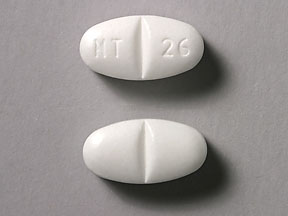
I’m looking for gabapentin to help with severe carpal. Tunnel